Table of Contents

Introduction
Once again, the topic of a caste census is gaining attention in the country’s political scene. This comes after the Bihar government unveiled the findings from its recently completed Caste Survey within the state. The goal of this survey was to collect information about the numbers and socio-economic situations of various caste groups in Bihar. The hope is that by conducting this survey, it will put pressure on the central government to carry out a socio-economic caste census for the year 2021, which had been postponed due to the COVID-19 pandemic.
https://x.com/NitishKumar/status/1708755688032543142?s=20
https://x.com/NitishKumar/status/1708755688032543142?s=20
Bihar Caste Survey report was released on 2 October 2023, on Mahatma Gandhi Jayanti by Nitish Kumar government. As per this report Bihar’s population is accounting to be 13 crores.
Census, Caste Census, and Caste Survey Explained
Census
A census is a comprehensive process that involves gathering, organizing, analyzing, and sharing demographic, economic, and social information about all the people in a country at a specific point in time. In India, a census is carried out every 10 years.
Historically, every census in independent India, from 1951 to 2011, included data on Scheduled Castes and Scheduled Tribes but did not provide information on other castes. Prior to 1931, every census included caste data. As a result, there has been a growing demand for a socio-economic caste census to be conducted in 2021.
Caste Census
A caste census, specifically the Socio-Economic Caste Census (SECC), was conducted for the first time in independent India in 2011. However, the findings of this census were never made public. The last time comprehensive data on all castes were published was in the 1931 census.
Caste Survey
Because only the Union government has the authority to conduct a full census, several state governments, like Bihar and Odisha, have taken it upon themselves to carry out socio-economic caste surveys. These surveys aim to assess the social and economic status of different caste groups to inform better policymaking. The recently released Bihar caste survey is a recent example of this practice in action.
Background
On June 1, 2022, after an all-party meeting, Nitish Kumar announced that “all nine parties (including the Bihar BJP unit) unanimously decided to go ahead with the caste census.” The next day, the state’s Council of Ministers approved the proposal to conduct the survey. It was decided to use Bihar’s own resources and Rs 500 crore from its contingency fund for this exercise.
Survey – Two Phases
The survey had two main parts. In the first phase, which took place from January 7th to January 21st, they counted how many households there are in Bihar. The second and final phase started on April 15th, and during this phase, they gathered information about people from different castes, religions, and economic backgrounds. They also looked at things like how many family members live in Bihar and how many live outside the state.
High Court disruption
The second phase was stopped mid-way after the Patna High Court put a stay on it, saying the state government wasn’t competent to carry out the survey. Subsequently, the Bihar government approached the Supreme Court, seeking a stay on the order. However, the top court refused to do so, observing that the High Court had kept the matter for hearing on July 3.
A huge relief came for the state government on August 1, when the High Court ultimately said the survey was “perfectly valid”. The next day, the caste survey resumed. On August 25, Nitish said the survey had concluded. Now, the findings of the survey have been made public.
Bihar Caste Survey Report: Key Findings
Bihar is most densely populated state in India. As per Bihar Caste Survey report, there are more than 131 million people (Approx. 13 crores) living in the state overall. The report also revealed that 27.1 percent of the population is from the backward classes, while 36 percent are from the extremely backward classes (EBC), 19.7 percent are from Scheduled Castes, and only 1.7 percent are from Scheduled Tribe.
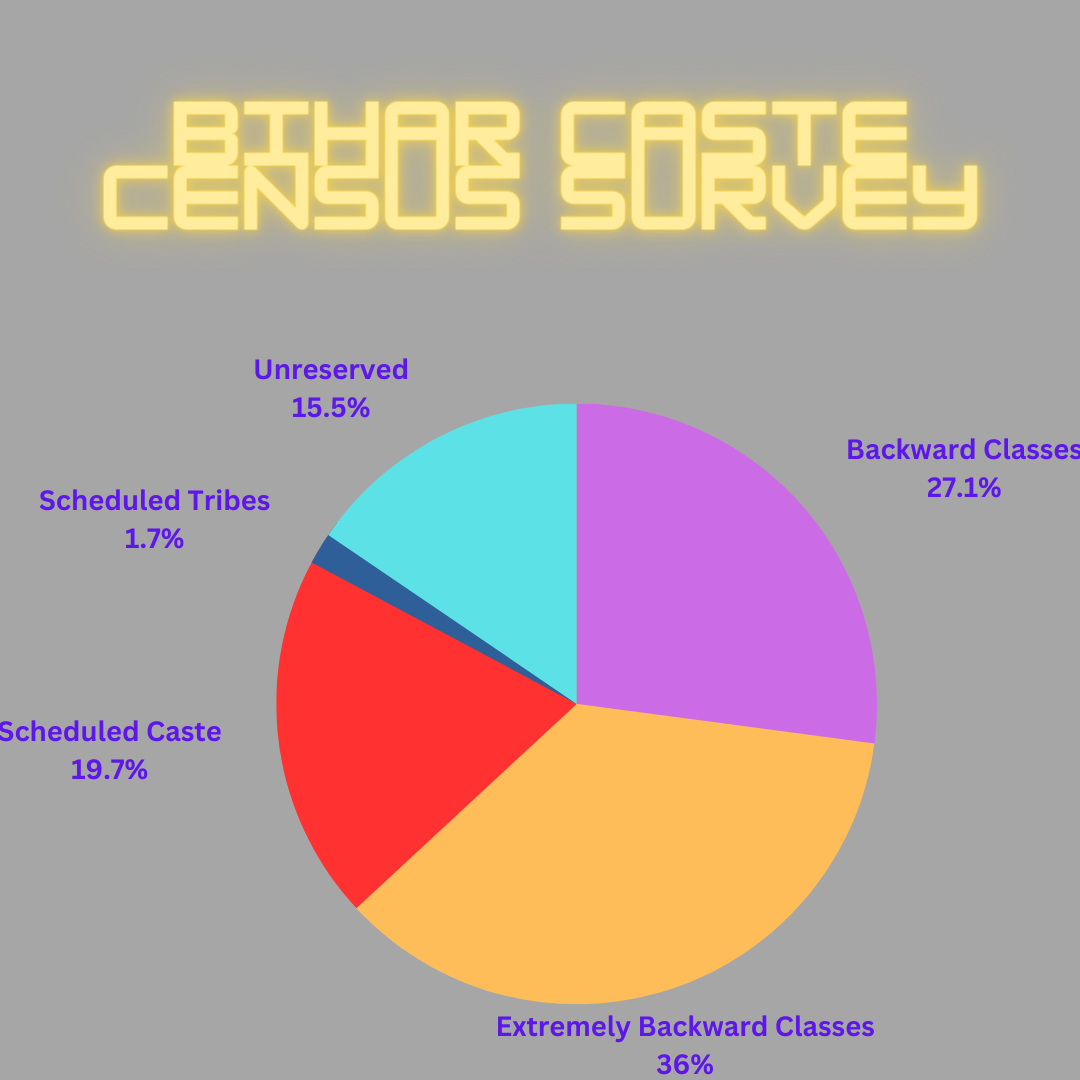
Other Backward Classes (OBCs) and Extremely Backward Classes (EBCs) constitute more than 63% of the population of Bihar, according to the findings of the caste survey released by the state government.
Out of the total population of 13,07,25,310, OBCs are 3,54,63,936 (27%) and EBCs are 4,70,80,514 (36%).
The forward or “General” category constitute only 15.5% of the population.
If we consider numbers then as per data, there are about 19.7 % (2.6 crore) Scheduled Castes (SCs), and just 1.7% (22 lakh) Scheduled Tribes (STs). The study revealed the Yadav community, also known as the Bihar Jati Adharit Ganana, to be the biggest sub-group, making up 14.27% of all OBC categories.
The table below (non-exhaustive) shows the percentage-wise breakup of some prominent sub-castes as per Bihar government’s data.

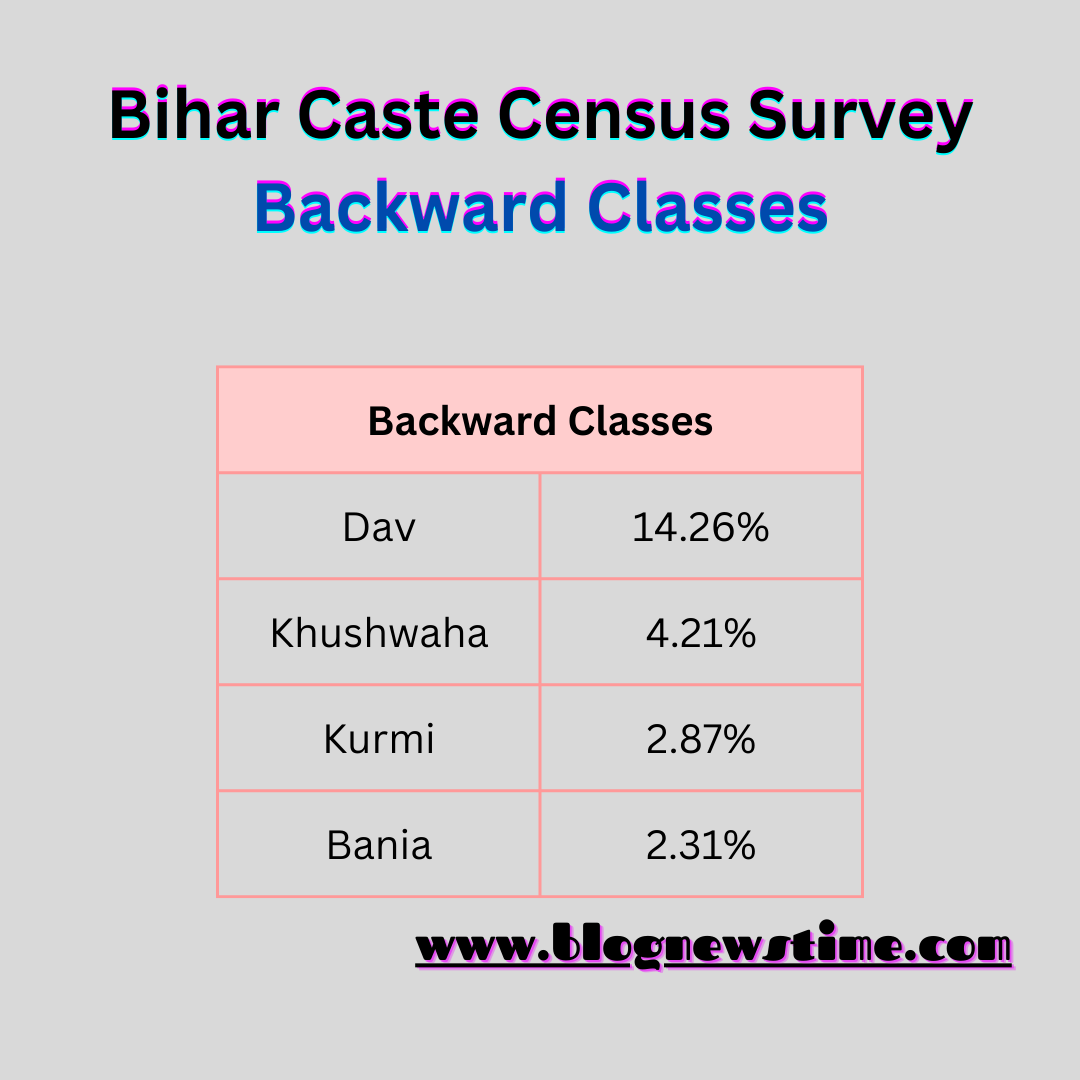
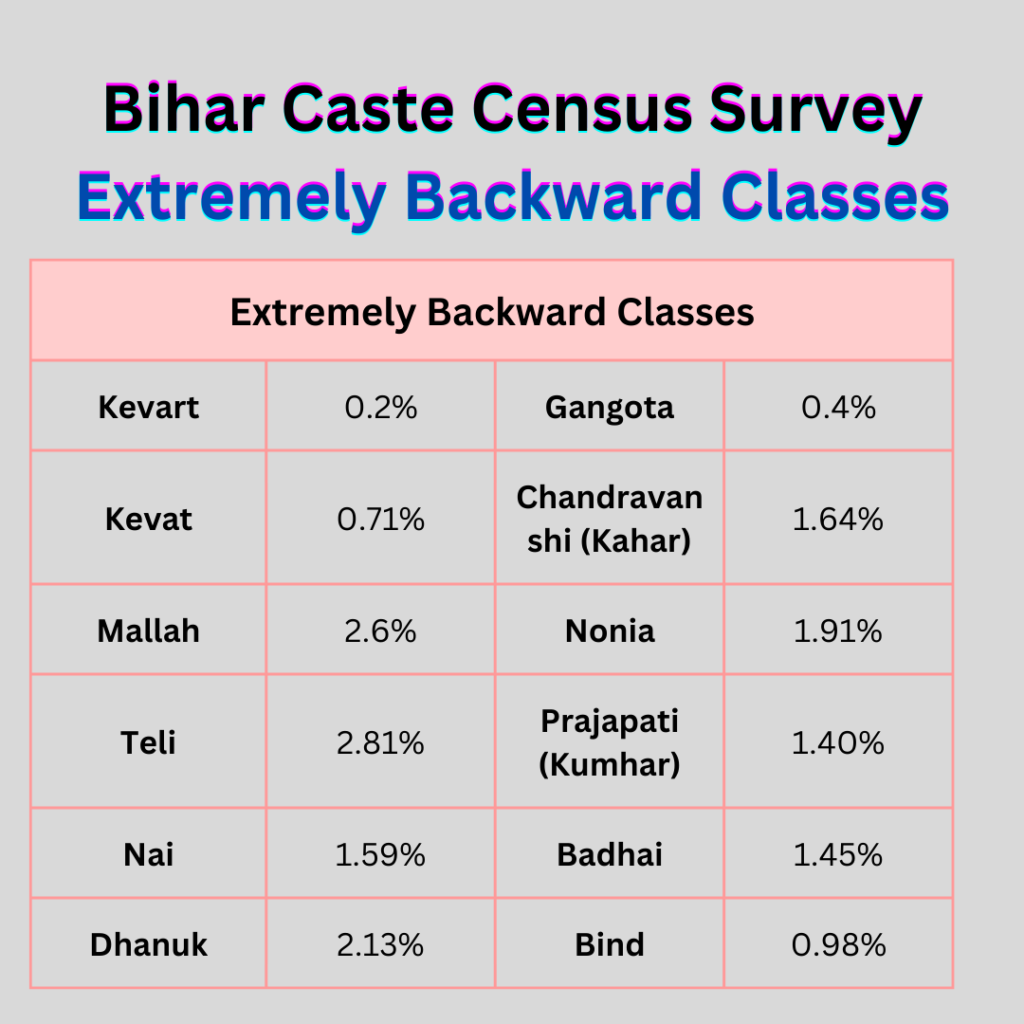
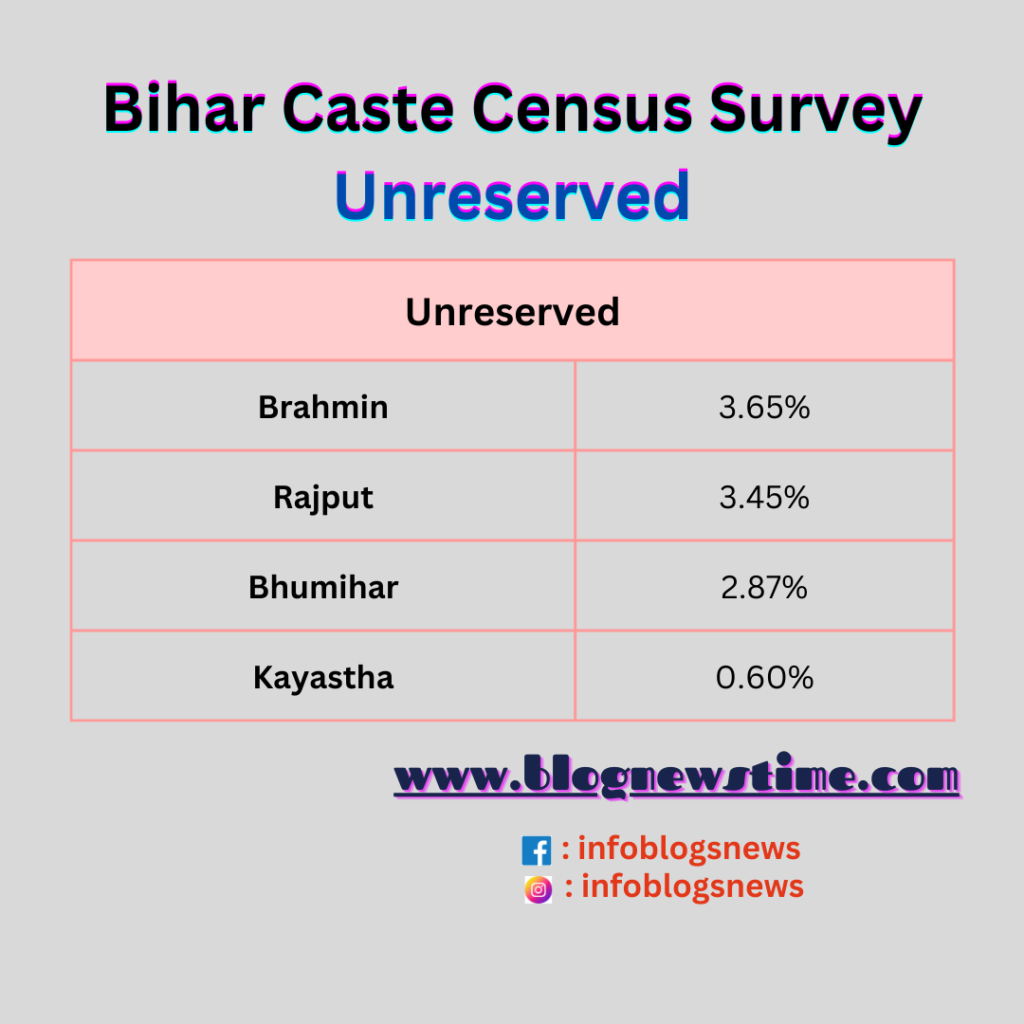

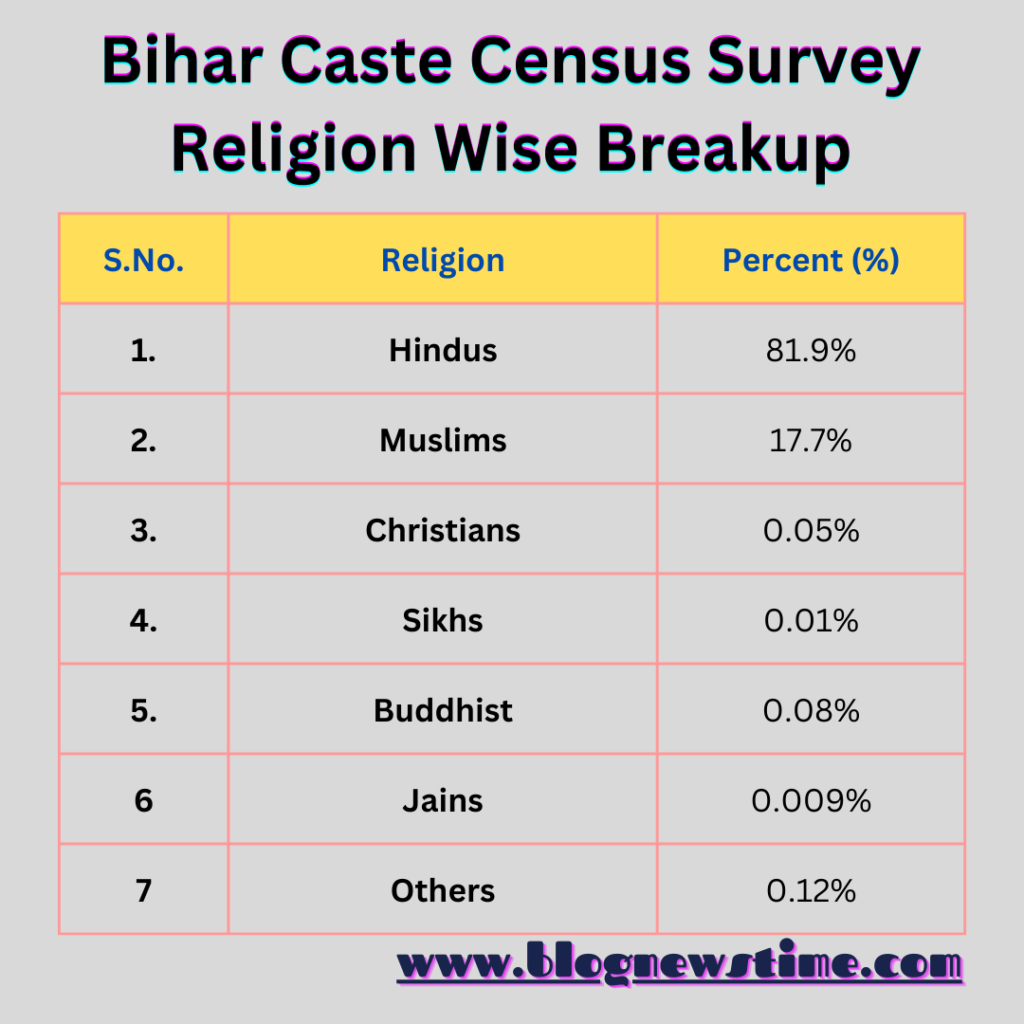
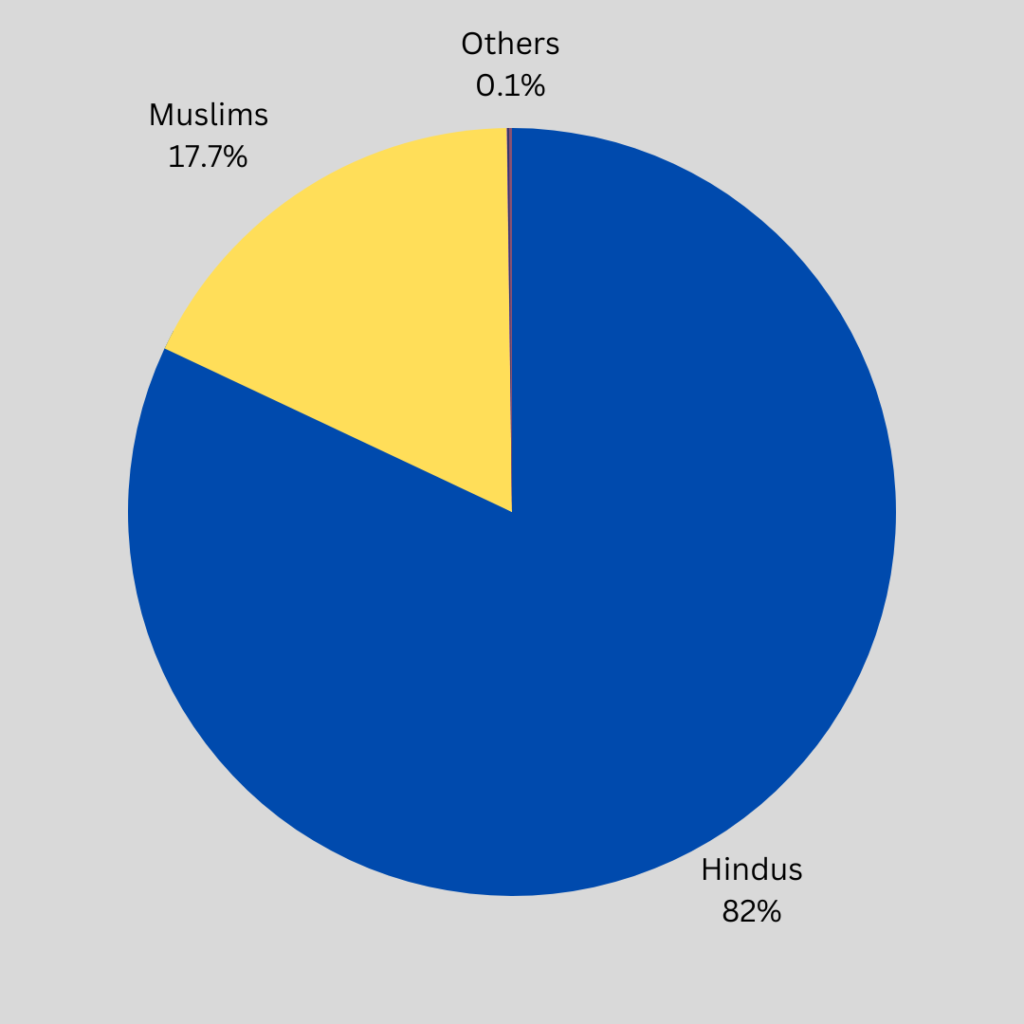
What are the Benefits of Conducting a Caste Survey?
Improved Policy Making
A caste census provides comprehensive data that can empower policymakers to craft more effective policies and strategies for the upliftment of marginalized groups in society.
Fairer Reservation Allocation
Current reservation policies are based on caste census data from as far back as 1931. A new caste census can help the government identify which sections have benefited the most and adjust their share of reservations, providing opportunities to other castes in need.
Precise Targeting of Welfare Schemes
By utilizing data gathered from a socio-economic caste census, the government can better direct its welfare programs toward the most marginalized segments of the population, ensuring that those who need assistance the most receive it.
Constitutional Backing
Our Constitution supports the idea of conducting a caste census. Article 340 mandates the appointment of a commission to investigate the conditions of socially and educationally backward classes and recommend government actions.
What Are the Drawbacks of Conducting a Caste Survey?
Caste-Based Political Manipulation
One major concern is that the data collected during a caste census could be exploited by political parties for their own narrow political interests. This might encourage the use of caste-based mobilization tactics in the country. At a time when India is striving to eliminate and weaken the influence of caste, a caste census could potentially strengthen it.
Reinforcing Caste Identities
There’s a worry that counting castes might reinforce or solidify caste identities, which could be detrimental to the goal of national integration. In fact, even years after the Socio-Economic Caste Census (SECC), a significant portion of its data remains undisclosed or has been released only partially due to these concerns.
Increased Demands for Reservations
Conducting a caste census might lead to more demands for larger or separate quotas in government jobs and educational institutions. This has been evident in cases like the Patels, Gujjars, Jats, and other castes demanding reservations. A caste census could potentially fuel similar demands in the future.
Risk of Stigmatization
Revealing one’s caste identity might result in individuals being stigmatized or facing discrimination based on preconceived notions associated with their caste. This fear could discourage people from providing honest responses during the survey, which could undermine its accuracy.
You can read in more detail about this report on Wikipedia on the link: Wiki-Bihar Caste Survey
You can also read:


4 thoughts on “Bihar Caste Survey : Report, Data Analysis, Background, Pros & Cons”